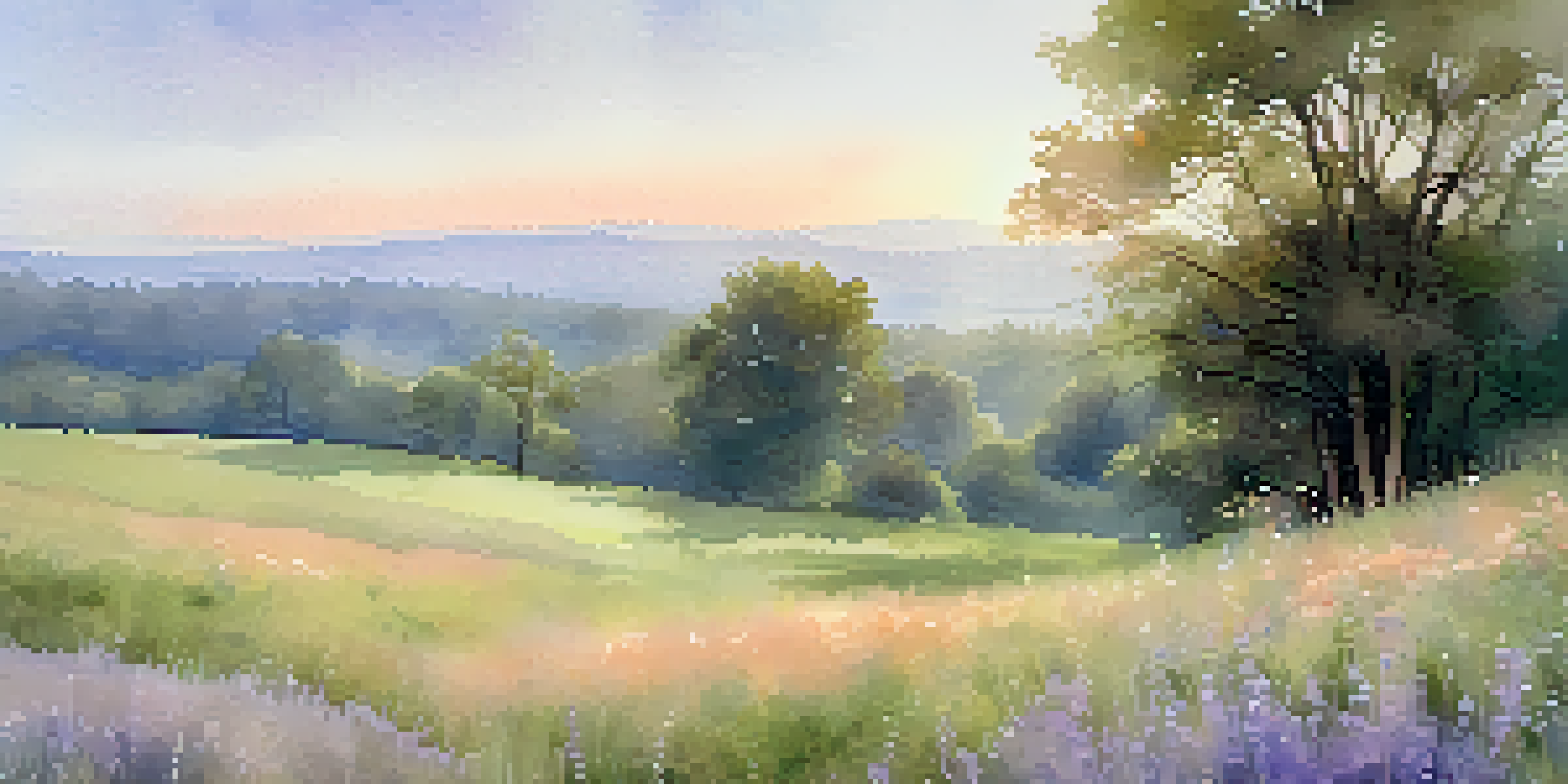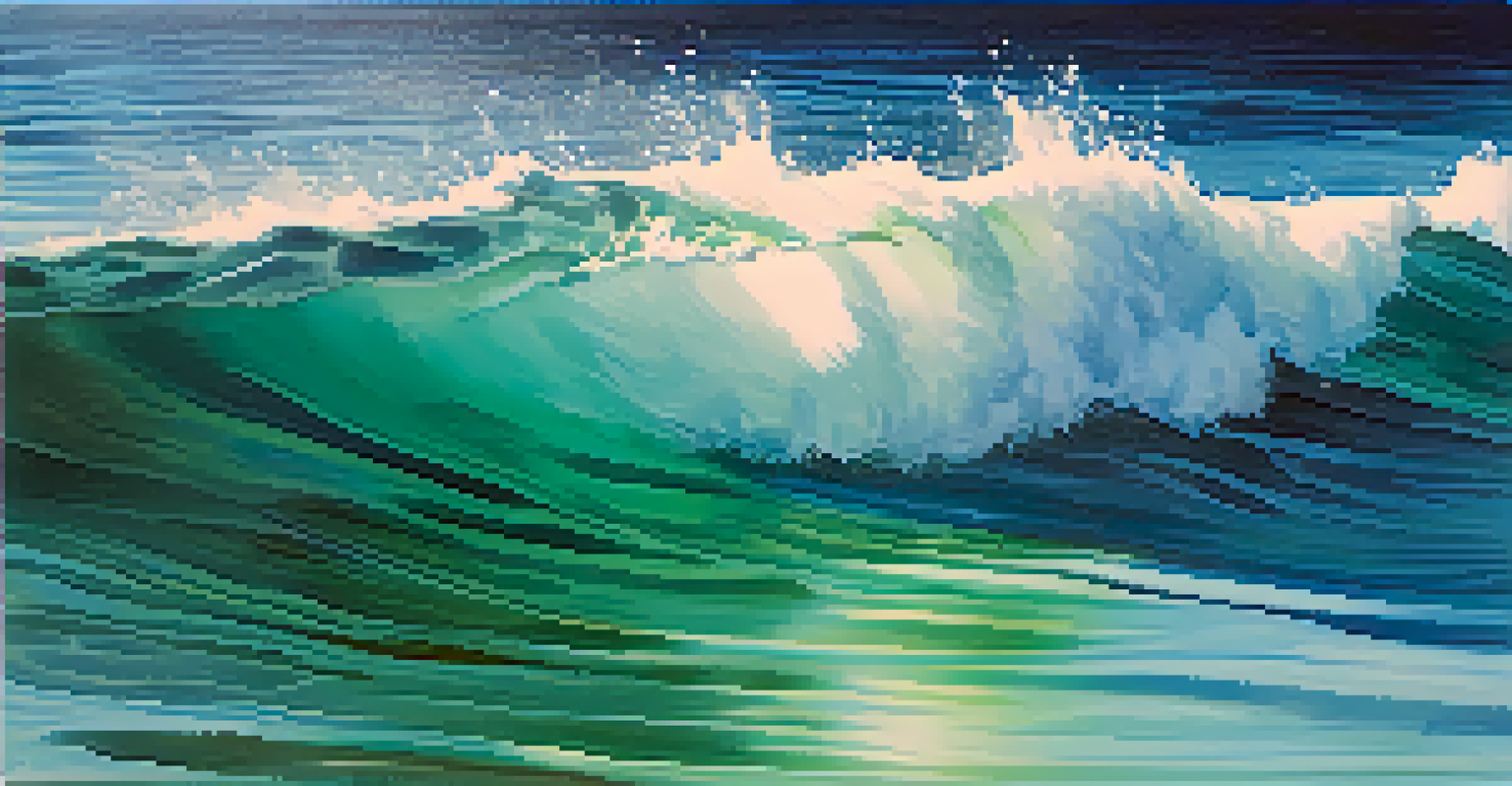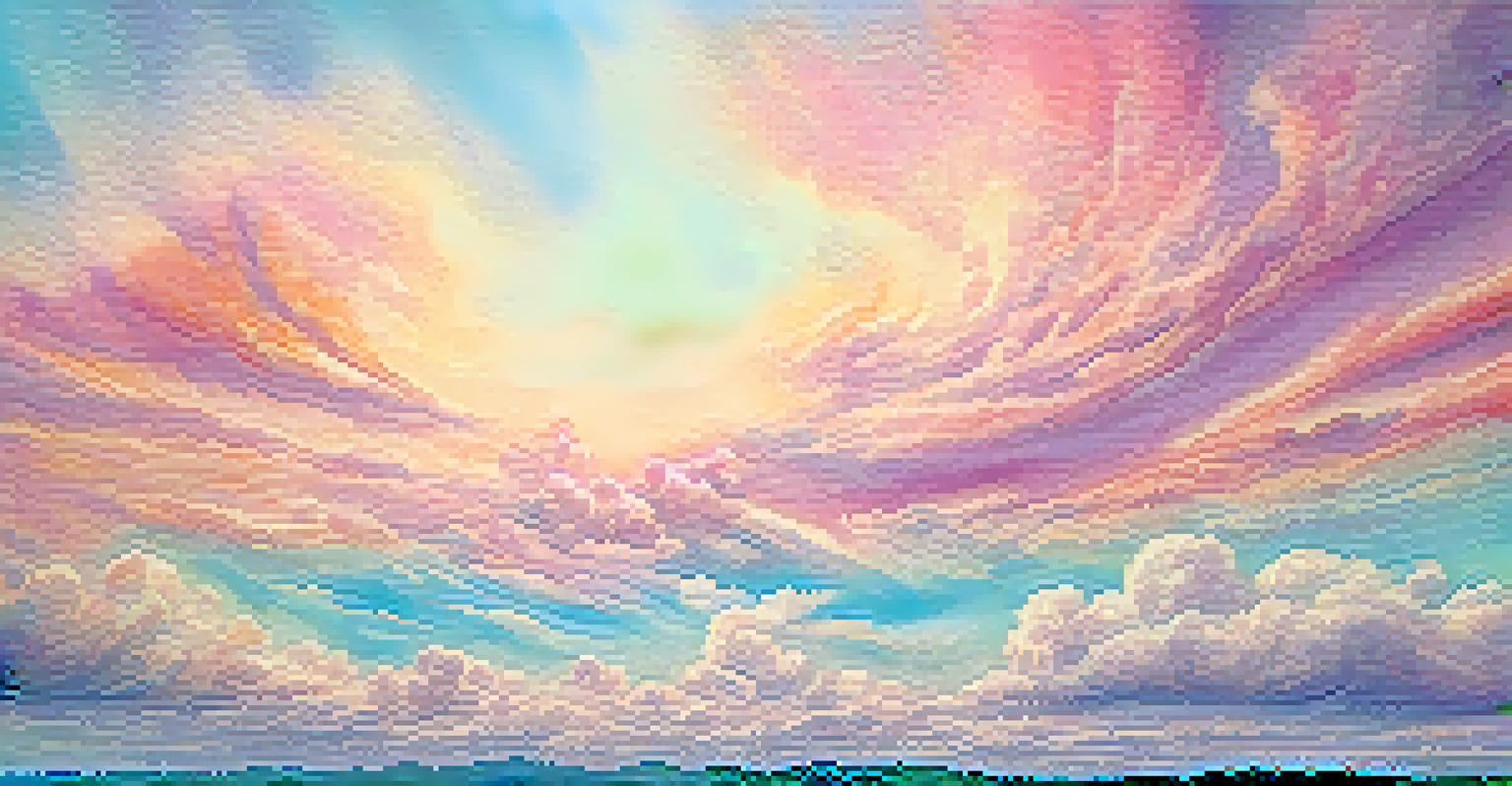Watercolor Wash Techniques: Creating Beautiful Backgrounds

Understanding Watercolor Wash Basics for Beginners
Watercolor washes form the foundation of beautiful backgrounds in painting. They provide a soft, blended effect that can evoke emotions and set the mood for your artwork. To start, it’s essential to understand the different types of washes: flat, gradient, and wet-on-wet.
Watercolor painting is a dance between the artist and the medium, where each stroke tells a story of spontaneity and control.
A flat wash is achieved by applying an even layer of color, while a gradient wash transitions from one shade to another, creating depth. Wet-on-wet involves applying wet paint onto wet paper, leading to a more fluid and unpredictable result. These basic techniques are vital for any artist looking to enhance their skills.
By mastering these foundational techniques, you’ll be well on your way to creating captivating backgrounds that enhance your primary subjects. Let’s dive into the specifics of each technique to see how they can transform your artwork.
The Flat Wash Technique: Achieving Consistency
The flat wash technique is all about achieving a smooth, uniform layer of color across your paper. To create a flat wash, you'll want to use a large brush and plenty of water to ensure the paint flows easily. Start by wetting your brush and loading it with paint, then apply it in long, even strokes.

As you work, keep a consistent amount of water and paint on your brush to prevent streaks. If done correctly, the result should be a seamless layer of color that serves as a beautiful backdrop for your main subject. Remember, practice is crucial, so don't hesitate to experiment with different colors and shades.
Mastering Wash Techniques
Understanding and practicing flat, gradient, and wet-on-wet washes are essential for creating captivating watercolor backgrounds.
This technique is especially effective for landscapes or skies, where a smooth gradient can mimic the natural transitions found in nature. With a bit of patience and practice, your flat washes will become a strong asset in your watercolor toolkit.
Creating Depth with Gradient Wash Techniques
Gradient washes add depth and dimension to your backgrounds, making them visually appealing. To achieve this effect, you'll start with a saturated color at one end and gradually add water as you move across the paper. This gradual dilution creates a beautiful transition that draws the viewer's eye.
The beauty of watercolor is in its unpredictability. It’s a medium that teaches you to embrace the unexpected.
A helpful tip is to work quickly to maintain a wet surface, which allows the colors to blend seamlessly. You can use a large brush to cover more area and to help in achieving that smooth transition. Practice on scrap paper until you feel comfortable with the amount of water to add for the desired gradient effect.
Gradient washes are perfect for sunsets, oceans, or abstract backgrounds. They can infuse your artwork with a sense of movement and richness, making your pieces more engaging.
Exploring Wet-on-Wet Techniques for Fluid Effects
The wet-on-wet technique is where the magic of watercolor really comes alive. This method involves applying wet paint onto wet paper, allowing colors to blend in ways that are unpredictable yet stunning. It’s a fantastic way to create soft edges and ethereal backgrounds.
To start, wet your paper with clean water using a brush or a spray bottle. Once it’s evenly damp, apply your chosen colors and watch them swirl and mix. The beauty of this technique lies in its spontaneity—sometimes, the unexpected results can lead to breathtaking backgrounds.
Layering for Depth
Applying multiple layers of color enhances the complexity and richness of watercolor backgrounds.
Wet-on-wet is particularly effective for creating skies filled with clouds or abstract washes that evoke emotion. Embrace the unpredictability, and let your creativity flow freely as you explore this dynamic technique.
Layering Techniques: Building Complexity in Backgrounds
Layering is an essential technique in watercolor that allows you to build complexity in your backgrounds. By applying multiple washes of color, you can create depth and richness that single layers simply can’t achieve. Start with a light wash and let it dry before applying additional layers.
When layering, always remember to work from light to dark. This means starting with your lighter colors and gradually adding darker shades. This approach not only enhances the overall composition but also helps maintain the transparency that watercolor is known for.
Layering can transform a flat background into a multi-dimensional space, making your artwork pop. Experiment with different colors and techniques to see how layering can elevate your paintings to new heights.
The Magic of Salt: Adding Texture to Watercolor Washes
Did you know that salt can add a unique texture to your watercolor washes? When sprinkled onto wet paint, salt absorbs the water and creates fascinating patterns as it dries. This technique can be particularly useful for backgrounds, giving them an organic, textured feel.
To use the salt technique, apply your wash and then sprinkle coarse salt over the wet paint. As the salt absorbs the moisture, it will leave behind interesting textures and light spots. Once the painting is dry, gently brush away the salt to reveal the beautiful effects.
Experimenting with Tools
Using various tools beyond traditional brushes can lead to unique textures and effects in your watercolor paintings.
This technique works wonderfully for landscapes, especially for creating effects like starry skies or sandy beaches. Embrace this playful method to add a touch of whimsy and surprise to your watercolor backgrounds.
Experimenting with Tools: Brushes, Sponges, and More
While traditional brushes are commonly used for watercolor washes, don’t hesitate to experiment with various tools. Sponges, palette knives, and even your fingers can create unique textures and effects that a brush alone can’t achieve. Each tool brings its own character to your painting.
For instance, using a sponge can create soft, stippled effects that mimic natural textures like clouds or foliage. Palette knives can add sharp lines or scraping effects, providing contrast to softer washes. Experimenting with these tools can help you discover exciting techniques that resonate with your artistic style.

By exploring different tools, you’ll expand your repertoire and find new ways to express your creativity. The key is to stay open-minded and curious, letting your imagination guide your experimentation.
Final Tips for Successful Watercolor Wash Backgrounds
Creating beautiful watercolor wash backgrounds requires practice, patience, and a willingness to experiment. Always remember to start with clean, high-quality materials to ensure the best results. This includes using good quality watercolor paper, brushes, and paints.
Before you dive into your artwork, take some time to plan your colors and techniques. This preparation can help streamline your process and enhance your final product. Additionally, don’t be afraid to make mistakes; they often lead to the most interesting outcomes.
Finally, keep practicing! The more you experiment with different techniques and tools, the more confident you’ll become. With time, you'll develop your unique style and create stunning backgrounds that elevate your watercolor paintings.